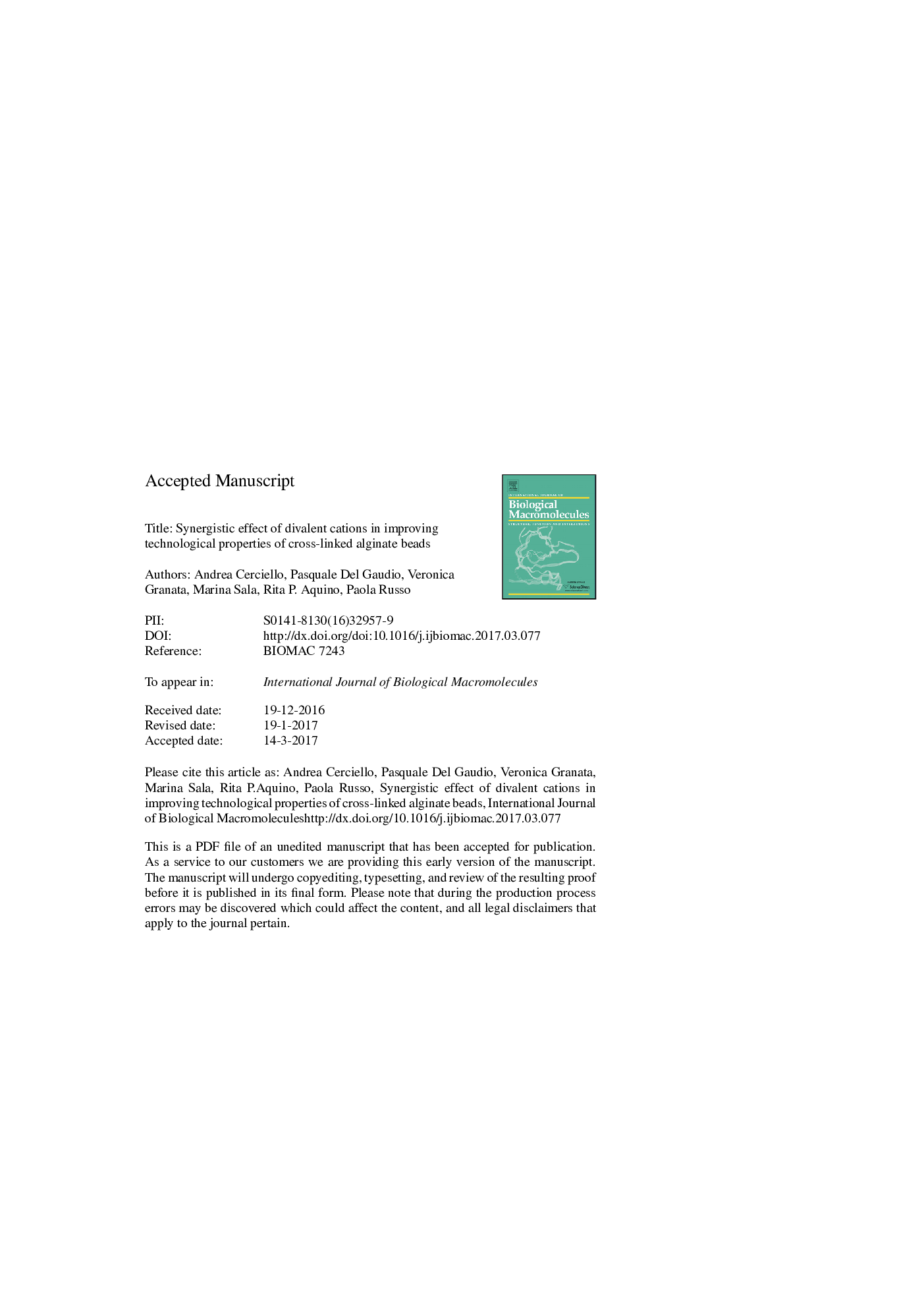| Article ID | Journal | Published Year | Pages | File Type |
|---|---|---|---|---|
| 5511935 | International Journal of Biological Macromolecules | 2017 | 25 Pages |
Abstract
Gelling solution parameters are some of the most important variables in ionotropic gelation and consequently influence the technological characteristics of the product. To date, only a few studies have focused on the simultaneous use of multiple cations as gelling agents. With the aim to deeply explore this possibility, in this research we investigated the effect of two divalent cations (Ca2+ and Zn2+) on alginate beads formation and properties. Alginate beads containing prednisolone (P) as model drug were prepared by prilling technique. The main critical variables of the ionotropic gelation process i.e. composition of the aqueous feed solutions (sodium alginate and prednisolone concentration) and cross-linking conditions (Ca2+, Zn2+ or Ca2+Â +Â Zn2+), were studied. The obtained beads were characterized and their in vitro release performances were assessed in conditions simulating the gastrointestinal environment. Results evidenced a synergistic effect of the two cations, affecting positively both the encapsulation efficiency and the ability of the alginate polymeric matrix to control the drug release. A Ca2+/Zn2+ ratio of 4:1, in fact, exploited the Ca2+ ability of establish quicker electrostatic interactions with guluronic groups of alginate and the Zn2+ ability to establish covalent-like bonds with carboxylate groups of both guluronic and mannuronic moieties of alginate.
Related Topics
Life Sciences
Biochemistry, Genetics and Molecular Biology
Biochemistry
Authors
Andrea Cerciello, Pasquale Del Gaudio, Veronica Granata, Marina Sala, Rita P. Aquino, Paola Russo,
